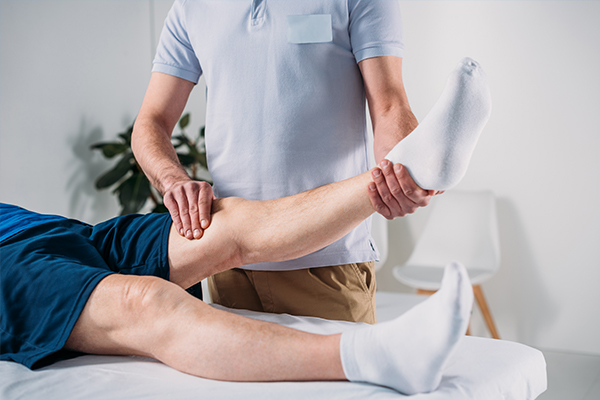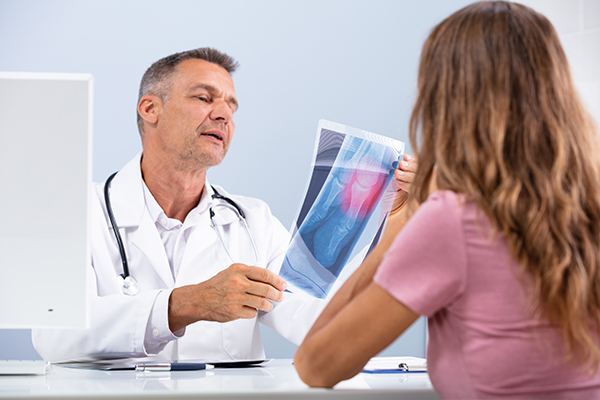In this article:
Osteoarthritis (OA) is the most prevalent form of arthritis caused by the gradual degeneration of joints. It is a progressive disorder, which means its severity worsens with age. This kind of arthritis can affect people of all ages and gender but is common in older adults and women.

OA can occur in any joint, but the prime targets include the hands, fingers, and neck as well as weight-bearing joints such as those in the lower back, hips, knees, and feet.
Injury to the joint can further speed up the degeneration of the skeletal tissue. The progressive deterioration of the joint tissue and bones can cause difficulties in moving the joint and carrying out everyday tasks.
Treatment for Osteoarthritis

OA has no medical cure. Thus, it typically requires long-term management of joint pain and inflammation, primarily through nonsurgical means. Thereafter, surgery can be considered if all the preliminary measures fail to provide relief.
Nonsurgical treatments, medications, injections
The mainstay treatment for OA includes the following nonsurgical interventions: (1)
- Education on disease and treatment
- Weight loss for overweight patients
- Low-impact aerobic exercise programs such as walking, cycling, and swimming or other aquatic exercises for people capable of exercise
- Exercises to strengthen the quadriceps, leading to reductions in pain and improvements in function, for lower extremity OA
- Physical therapy for better range-of-motion of the joints, muscle strengthening, muscle stretching, and soft tissue mobilization
- Braces and orthotics for those with joint instability and malalignment of the joint(s)
- Appropriate supportive footwear for lower extremity OA
Medications for pain management usually come in topical, oral, and injection formulations.
Acetaminophen (Tylenol) and nonsteroidal anti-inflammatory drugs (NSAIDs) are mostly available with a prescription, but topical analgesics such as capsaicin cream can be bought over the counter.
Note: Please consult your physician before starting any medication for the appropriate dosage to avoid any undue side effects later. Narcotic pain relievers, such as compounds containing hydrocodone or oxycodone, are no longer recommended for managing chronic arthritic pain.
Supplements such as glucosamine and chondroitin are purported to slow the progression of cartilage degeneration while accelerating the regeneration of new joint tissue. This may help decrease the intensity of OA-induced pain and improve the mobility of the affected joint. (2)
Caution: Always discuss these treatments with your physician before starting to make sure they are right for you.
Surgery
Surgery is the last resort for OA treatment and is only considered when the condition goes beyond the purview of optimized physical and medicinal therapy.
The primary indications for surgery are:
- Debilitating pain
- A major limitation of function such as walking and daily activities
- Impaired ability to sleep or work
A number of surgical interventions can help repair joint damage and deformity or, in extreme cases, replace the joint altogether. (3)
If the joint degeneration can be reversed, the doctor will opt for a minimally invasive arthroscopic surgery, although this remains somewhat controversial. This surgery involves inserting a fiber-optic tube with an attached camera inside the joint through small incisions. The camera allows the doctor to visualize the extent of damage and then surgically correct it.
In one well-designed placebo surgery trial, improvement in the symptoms was largely attributed to a placebo effect. However, for a subgroup of knees with loose bodies or flaps of meniscus or cartilage that are causing mechanical symptoms, especially catching or locking of the joint, arthroscopic removal of these unstable tissues may improve joint function and alleviate the mechanical symptoms. (1)
Some commonly used surgical procedures for OA include:
- Fusion (arthrodesis): Two or more bones are fused inside the joint often to relieve the unmanageable pain and stiffness caused by OA. Deformed or unstable joints can be fixed using this method when all other normally indicated interventions are unsuccessful.
- Osteotomy: The bones that meet inside the joints are cut and reshaped to make them align comfortably. This operation may be done to shorten or lengthen the bones to enable pain-free movement.
- Joint replacement (arthroplasty): The primary indications for this surgery are severe daily pain and X-ray evidence of narrowing of the joint space. In the appropriate patient, good to excellent results can be expected in 95% of cases. (1)
Care after surgery

Postoperative care is extremely important to rehabilitate the joint after surgery. To that end, your doctor will advise the necessary precautions to protect your joint from any potential injury.
- You will be required to follow a specially designed rehabilitation exercise program to restore muscular and articular function in the joint, initially under the expert supervision of a physiotherapist and later on your own.
- You will be informed about what foods to include and exclude from your diet to facilitate quicker healing, reduce the pain and inflammation, and prevent future flare-ups of OA symptoms. (4)
Diagnosing Osteoarthritis
Since different types of arthritis warrant different treatments, it is very important to get a proper diagnosis before you get around to managing the condition.

To diagnose OA, your doctor will first inquire about your symptoms and perform a physical examination to determine the severity of the condition. The symptoms of OA may include:
- Bony swelling at the affected site
- Tenderness over the joint
- Joint instability
- Crackling, popping, or grating sounds (crepitus) coming from the arthritic joints
- Presence of excess synovial fluid
- Limitations in range of motion
- Joint weakness
Your doctor may order a few additional diagnostic tests to understand the extent of joint damage and rule out other possible causes of your joint pain. These tests include:
- An X-ray of the joint to detect any bony changes or other problems that may be responsible for your pain
- Blood tests to eliminate the possibility of other forms of arthritis
- Magnetic resonance imaging (MRI) to reveal the state of the cartilage and tendons and even show signs of fluid retention (edema) in the subchondral bone
Final Word
OA is more or less a lifelong ailment with no known medical cure, but there are things you can do to reduce the severity of its symptoms and delay its progression.
You can maintain or improve joint function through a holistic treatment strategy that includes medication, physical therapy, lifestyle changes (exercise and weight management), and proper diet.
Surgery serves as the last resort if all other interventions fail to provide any relief, but the success rates vary from patient to patient. When your joint becomes damaged beyond repair, there is no choice but to replace it with an artificial one.

- Was this article helpful?
- YES, THANKS!NOT REALLY


